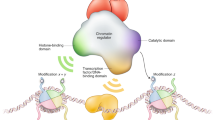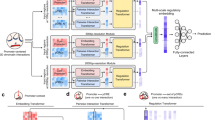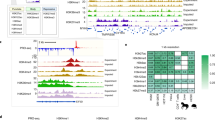Abstract
Background
Transcriptional regulation in cells makes use of diverse mechanisms to ensure that functional states can be maintained and adapted to variable environments; among them are chromatin-related mechanisms. While mathematical models of transcription factor networks controlling development are well established, models of transcriptional regulation by chromatin states are rather rare despite they appear to be a powerful regulatory mechanism.
Results
We here introduce a mathematical model of transcriptional regulation governed by histone modifications. This model describes binding of protein complexes to chromatin which are capable of reading and writing histone marks. Molecular interactions between these complexes and DNA or histones create a regulatory switch of transcriptional activity possessing a regulatory memory. The regulatory states of the switch depend on the activity of histone (de-) methylases, the structure of the DNA-binding regions of the complexes, and the number of histones contributing to binding.We apply our model to transcriptional regulation by trithorax- and polycomb- complex binding. By analyzing data on pluripotent and lineage-committed cells we verify basic model assumptions and provide evidence for a positive effect of the length of the modified regions on the stability of the induced regulatory states and thus on the transcriptional memory.
Conclusions
Our results provide new insights into epigenetic modes of transcriptional regulation. Moreover, they implicate well-founded hypotheses on cooperative histone modifications, proliferation induced epigenetic changes and higher order folding of chromatin which await experimental validation. Our approach represents a basic step towards multi-scale models of transcriptional control during development and lineage specification.
Similar content being viewed by others
Article PDF
Author information
Authors and Affiliations
Corresponding author
Rights and permissions
About this article
Cite this article
Binder, H., Steiner, L., Rohlf, T. et al. Transcriptional memory emerges from cooperative histone modifications. Nat Prec (2011). https://doi.org/10.1038/npre.2011.6507.1
Received:
Accepted:
Published:
DOI: https://doi.org/10.1038/npre.2011.6507.1



